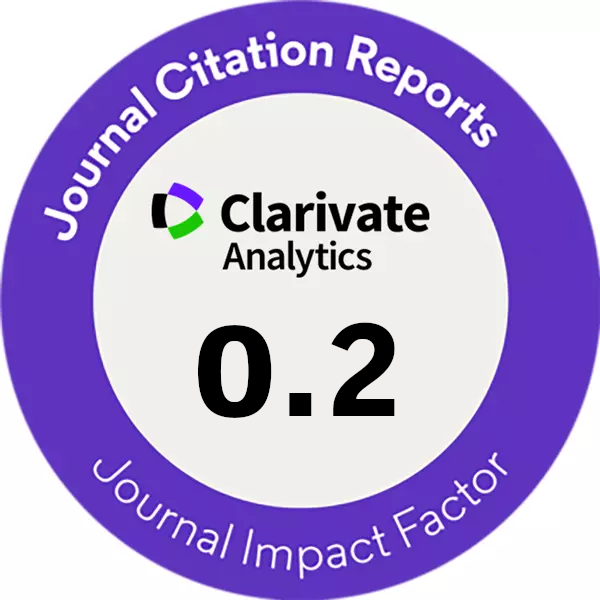A STUDY ON SEISMIC VULNERABILITY ANALYSIS OF CONCRETE GRAVITY DAM WITH STRAIN RATE EFFECT
DOI:
https://doi.org/10.14311/CEJ.2018.01.0011Keywords:
Concrete gravity dam, Strain rate, Seismic vulnerability, Earthquake risk, Damage gradeAbstract
The seismic vulnerability analysis of gravity dam can predict the probability of dam damage at different levels under different seismic loads. It is significant to evaluate the seismic safety, optimize the seismic design and develop the reinforcement measures of gravity dam. Based on the uncertainty of the material parameters of concrete and the earthquake, the seismic vulnerability analysis of the Koyna gravity dam with the strain rate effect is carried out. The dam vulnerability analysis method and the seismic vulnerability curve of Koyna gravity dam are given. The results show when the strain rate effect is considered, the probability of severe damage and dam break is less than without considering strain rate effect. Dam head break, dam heel crack and combination failure are the typical seismic damages of gravity dam, which is in line with the actual damage of the Koyna dam.The results show that the dam head, dam heel and slope break are the key parts to focus.
Downloads
References
Wang Chao, Zhang Sherong,LI Man,et al., 2014. Classification of earthquake damage to gravity dams based on a damage index model, Earthquake engineering and engineering dynamics. Vol. 01(06): 218-226. DOI: 10.13197/j.eeev.2014.06.218.wangc.027
Zhong Hong, Li Xiaoyan, Lin Gao, 2012. Analyses of failure modes-based seismic fragility of gravity dams, Journal of Dalian University of Technology. Vol. 52(1): 60-65. DOI:10.7511/dllgxb201201011
Li Haojin, Li Jie, Kang Fei, 2013. Fragility analysis for seismic stability of a gravity dam based on least square support vector machine. Journal of vibration and shock. Vol. 32(4): 146-152. DOI: 10.13465/j.cnki.jvs.2013.04.032
Kennedy R.P,1980. Seismic fragilities for nuclear power plant risk studies. Nuclear Engineering and Design. Vol. 59(2): 315-338. DOI: https://doi.org/10.1016/0029- 5493(84)90188-2
Varpasuo P., Puttonen J., Ravindra M.K, 1996. Seismic probabilistic safety analysis of unit l of the Loviisa nuclear power plant. Nuclear Engineering and Design. Vol. 160: 411-426. DOI: https://doi.org/10.1016/0029-5493(95)01118-8
Hirata K., Kobayashi.Y., Kameda.H. and Shiojiri H, 1991. Fragility of seismically isolated FBR structure. Nuclear Engineering and Design. Vol. 28(2):227-236. DOI:https://doi.org/10.1016/0029-5493(91)90104- p
Dimova.S.L, Negro.P(2005). “Seismic assessment of an industrial frame structure designed according to Eurocodes”. Part 2: Capacity and vuluerability. Engineering Structures. Vol. 27(5): 724-735. DOI: https://doi.org/10.1016/j.engstruct.2004.12.008
Lv Hongsha, 2005. Disaster risk analysis based on ground motion parameters. Beijing: Institute of Geophysics; China Earthquake Administration.
Yin Zhiqian, 1991. Study on the earthquake loss estimation. Earthquake Engineering And Engineering Vibration. Vol. 11(4): 87-96. DOI: 10.13197/j.eeev.1991.04.010
Lv Dagang, Wang Guangyuan, 2006. Local seismic fragility analysis of structures based on reliability and sensitivity. Journal of Natural Disasters. Vol. 15(4): 157-162. DOI: 10.13577/j.jnd.2006.0428
Ellingwood B.R., Tekie P.B., 2001. Fragility analysis of concrete gravity dams. Journal of Infrastructure Systems. Vol. 7(2): 41-48. DOI: https://doi.org/10.1061/(asce)1076 -0342(2001)7:2(41)
Shen Huaizhi, Jin Feng, Zhang Chuhan, 2008. Erformance-based seismic fragility analysis of concrete gravity-foundation system. Engineering Mechanics. Vol. 25(12): 86-91.
Li Xiaoyan, Zhong Hong, Lin Gao, 2011. Numerical simulation of damage process and failure modes of concrete gravity dams due to earthquake. Journal of hydraulic engineering. Vol. 42(10):, 1209-1217. DOI: 10.13243/j.cnki.slxb.2011.10.013
Wang Haitao, Fan Wenxiao, Liy Tianyun, An Zhiqiang, 2015. Experimental study on properties of full-graded concrete under uniaxial dynamic compressive stress state after freezing-thawing cycles. Journal of hydraulic engineering. 46(06), 732-738. Vol. DOI: 10.13243/j.cnki.slxb.20141422
Fan Wenxiao, 2015. Experimental study on the behavior of large aggregate concrete under biaxial dynamic stredd states after freezing-thawing cycles. Dalian Jiaotong University, Dalian.
GB 50010-2010, 2015, Code for design of concrete structures. China Architecture & Building Press, Beijing.
Wang Liangchen, 1981. Seismic dynamic analysis of concrete dam. Beijing: Seismological Press.
Seismic Analysis and Design, 1980, Chapter5, Structural Analysis and Design of Nuclear Plant Facilities, ASCE.
Housner G.W., Bergman L.A., Caughey T.K., et al, 1997. Structural Control: Past, Present, and Future. Journal of Engineering Mechanics. Vol. 123(9): 897-971.
Tao Nengfu, Xia Songyou, 1998. Assessment of earthquake-induced losses of dams. Journal of Hohai University. Vol. 26(1): 88-92.DOI: 10.3321/j.issn:1000- 1980.1998.01.018
Shen Huaizhi, 2007. Performance-based seismic damage analysis and risk evaluation model for concrete dam-foundation system. Tsinghua University, Beijing.
Downloads
Published
Issue
Section
License
Copyright (c) 2023 Author

This work is licensed under a Creative Commons Attribution-NonCommercial 4.0 International License.
Authors who publish with this journal agree to the following terms:
- Authors retain copyright and grant the journal right of first publication with the work simultaneously licensed under a Creative Commons Attribution License that allows others to share the work with an acknowledgement of the work's authorship and initial publication in this journal.
- Authors are able to enter into separate, additional contractual arrangements for the non-exclusive distribution of the journal's published version of the work (e.g., post it to an institutional repository or publish it in a book), with an acknowledgement of its initial publication in this journal.
- Authors are permitted and encouraged to post their work online (e.g., in institutional repositories or on their website) prior to and during the submission process, as it can lead to productive exchanges, as well as earlier and greater citation of published work (See The Effect of Open Access).










